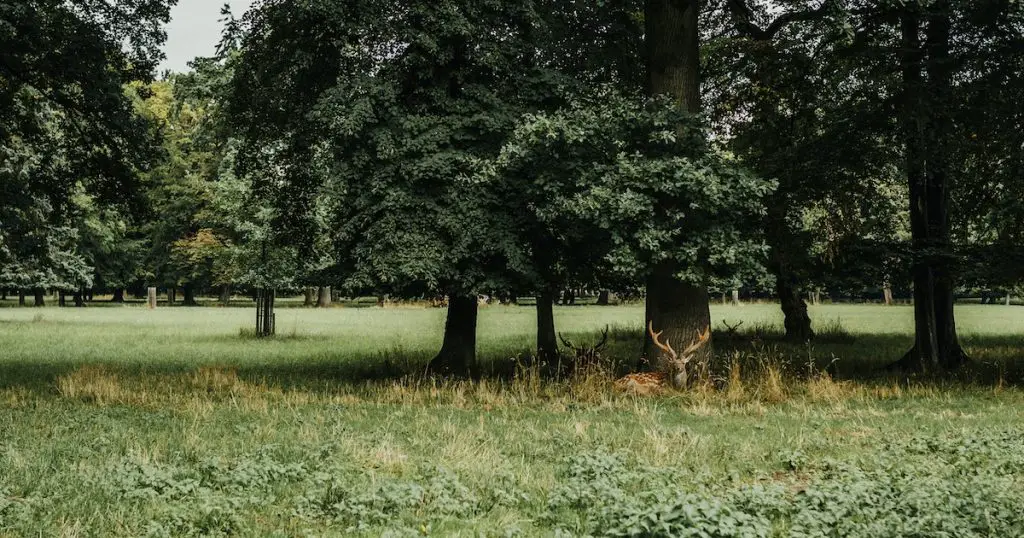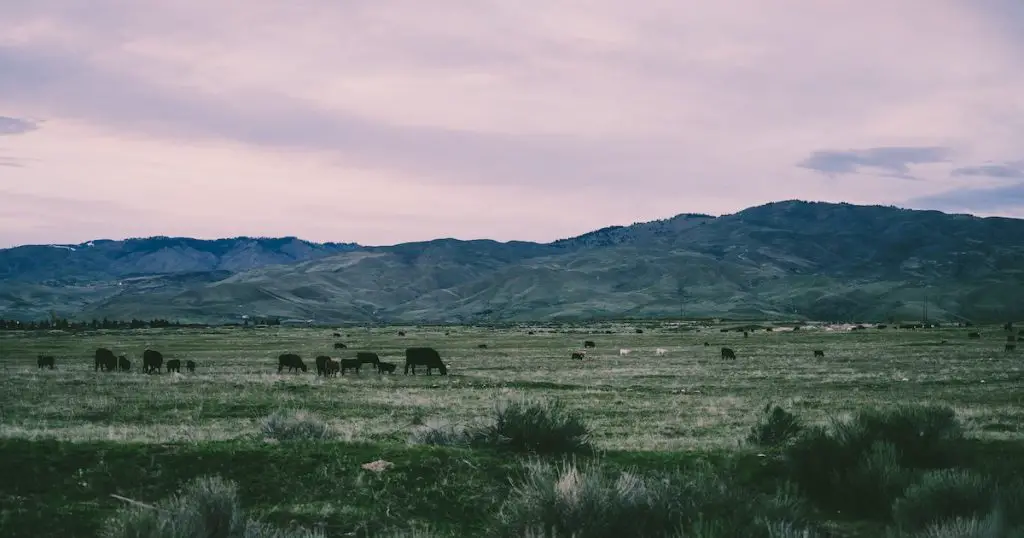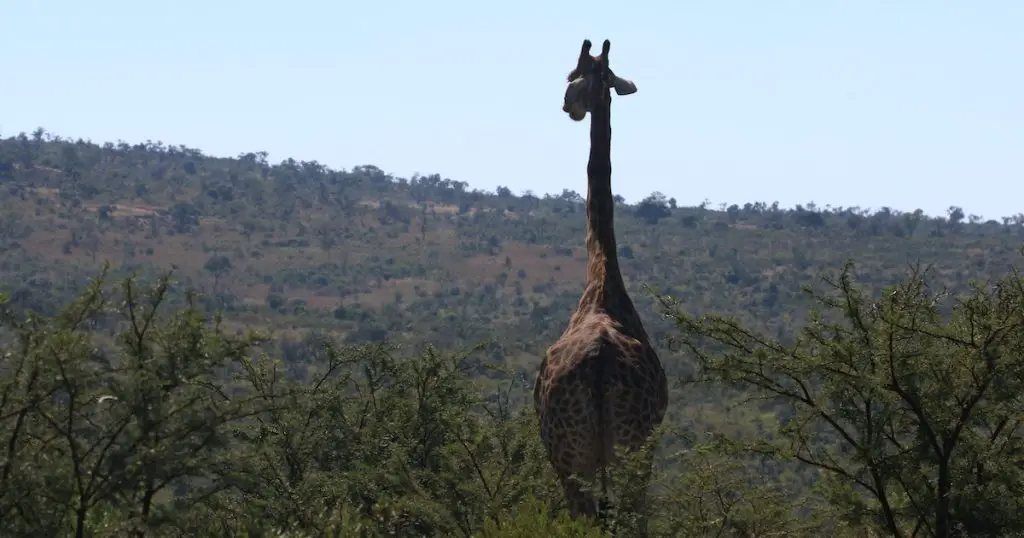Nestled in the heart of Arizona, Prescott is not only renowned for its rich history and charming downtown but also for its awe-inspiring natural parks. Many adventure-seekers and nature lovers are drawn to this city, eager to catch a glimpse of the common wildlife sightings in Prescott’s natural parks.

If you, like many, are enamored by the allure of the wild, this comprehensive guide will give you insights into the many treasures awaiting discovery.
The Furry Ambassadors of Prescott’s Parks
The rustle of leaves, the soft patter of footsteps, and the occasional playful frolic are telltale signs of Prescott’s furry denizens going about their day. From the nimble deer grazing at dawn to the nocturnal raccoon embarking on its nightly escapades, these mammals add depth and dynamism to the park’s vibrant tableau.
Each species, with its unique behaviors and habitats, tells a story of survival, adaptation, and the intricate interplay of nature. These furry ambassadors, whether captured in a fleeting moment or observed over extended periods, provide a heartwarming and intimate glimpse into the rich tapestry of life that thrives in Prescott’s natural sanctuaries.
The graceful woodland browsers
Deer, especially mule deer, are one of the most commonly sighted mammals in Prescott’s parks. With their large ears and graceful movements, they can often be seen browsing on shrubs in the early mornings or late afternoons. Visitors should approach with caution and keep a respectful distance to avoid spooking these delicate creatures.
Apart from their beauty, deer play a vital role in the ecosystem. They serve as prey for larger predators and help in seed dispersal, ensuring plant diversity. To learn more about mule deer and their habitats, Nature Conservancy provides detailed articles and research findings.
The desert’s wild pigs
Though often mistaken for pigs, javelinas, or collared peccaries, are indeed a unique species native to the American Southwest. With their coarse hair and distinctive tusks, they are hard to miss when exploring the parks of Prescott.
Javelinas travel in groups, often foraging for plants, fruits, and occasionally small animals. They are especially fond of prickly pear cacti, a common sight in Prescott. While they may seem docile, it’s essential to give them space, especially when young are present. Arizona Game & Fish Department offers safety guidelines and tips for encountering wildlife like the javelina.
Nocturnal and elusive predators
The foxes of Prescott, mainly the gray fox, are secretive creatures that come alive at night. Though sightings can be rare, the rewards are immense for those who catch a glimpse of these agile hunters.
Foxes play a crucial role in controlling populations of small rodents and insects. They’re also known to have complex social structures and communication methods. For more detailed insights into the life of foxes, the National Wildlife Federation has a plethora of resources.
The apex predator’s fleeting glimpse
Arguably the most elusive of Prescott’s mammalian residents, mountain lions reign supreme as apex predators. These solitary big cats command vast territories and are skilled hunters.
Their secretive nature and mostly nocturnal habits make them a rare sight for visitors. However, their presence is essential for maintaining ecological balance, controlling herbivore populations, and ensuring diversity. If you’re keen on understanding more about these majestic creatures, websites like Mountain Lion Foundation are treasure troves of information.

A Symphony in the Skies
As the sun begins its descent over Prescott’s natural parks, the skies come alive in a harmonious dance of wings and melodies. Flocks of birds, each with its distinct call, fill the horizon, painting the azure canvas with patterns of flight.
From the graceful soar of raptors to the flitting of finches, each avian resident plays a part in this aerial symphony. Their presence, both visually and acoustically, elevates the park experience, intertwining the majesty of nature with its innate musicality.
As observers, we are privileged to witness this ever-changing orchestration, a daily testament to the beauty and wonder of the natural world.
The soaring eagles and hawks
The sight of a raptor soaring overhead, riding the thermals, is nothing short of magnificent. Eagles, hawks, and falcons are common residents of Prescott’s parks, and their keen eyesight makes them formidable hunters.
- Golden Eagles: Majestic and powerful
- Red-tailed hawks: Common and versatile predators
- Peregrine falcons: Speedy aerial hunters
To delve deeper into the world of raptors, the Raptor Resource Project offers comprehensive insights.
Nature’s melodious messengers
The woodlands and meadows of Prescott are alive with the harmonious tunes of songbirds. From the cheerful chirps of the American robin to the complex melodies of the western meadowlark, these birds are a treat for both the ears and eyes.
Their presence also indicates a healthy ecosystem as they play a crucial role in pest control and plant pollination. For bird enthusiasts looking for detailed information, Cornell Lab of Ornithology provides a wealth of knowledge.
Residents of lakes and ponds
Prescott’s lakes, like the Watson and Goldwater lakes, are prime spots for waterfowl sightings. Ducks, geese, and herons are some of the common species that can be seen gracefully gliding on the water or foraging along the banks.
Waterfowl play an essential role in maintaining the health of aquatic ecosystems. They help in controlling aquatic vegetation and serve as indicators of water quality. Ducks Unlimited provides in-depth information on waterfowl and their conservation efforts.
Owls and their mysterious calls
The nocturnal avian inhabitants of Prescott, especially the owls, add an air of mystery to the parks. The hoots and calls of the great horned owl or the barn owl are both eerie and enchanting.
Owls are crucial for maintaining a balance in rodent populations. For those keen on nocturnal birdwatching or learning more about these mesmerizing creatures, The Owl Pages is a great starting point.
Cold-Blooded Inhabitants
The diverse terrains of Prescott’s natural parks provide the perfect haven for a myriad of reptiles and amphibians. From the sun-dappled rocks where lizards bask to the cool, shadowy ponds where frogs chorus, these cold-blooded inhabitants are a testament to nature’s adaptability.
Each species, be it the stealthy snake or the vibrant salamander, has evolved in harmony with its environment, playing crucial roles in maintaining the ecosystem’s health. Their presence not only adds to the park’s rich biodiversity but also serves as indicator of environmental health, reminding us of the delicate balance of nature.
The misunderstood slithering dwellers
Snakes are among the most misunderstood creatures. From the non-venomous gopher snake to the rattlesnake, these reptiles are vital for controlling rodent and insect populations.
They also serve as prey for larger animals. HerpNET offers extensive information on reptiles, including safe practices when encountering snakes.
Sunbathing acrobats
Lizards, with their darting movements and colorful displays, are a joy to observe. Species like the collared lizard or the horned lizard are common in Prescott’s parks.
Besides being prey for many birds and mammals, they help control insect populations. For more on lizards, the Reptile Database is a valuable resource.
Salamanders and newts, though not as commonly seen as other wildlife, play a pivotal role in aquatic ecosystems.
They serve as both predator and prey, and their presence often indicates clean, unpolluted water. Websites like AmphibiaWeb provide a deep dive into the world of amphibians.
The monsoon crooners
The rhythmic chorus of frogs and toads during the monsoon season is a testament to the vibrancy of life in Prescott’s parks. Whether it’s the spotted chorus frog’s persistent calls or the chunky Arizona toad hopping along the water’s edge, these amphibians are a treat for nature enthusiasts.
Frogs and toads play a vital role in the ecosystem, gobbling up insects and providing food for a variety of predators. Furthermore, their permeable skin makes them sensitive to environmental changes, often serving as bioindicators of ecosystem health. For those intrigued by these amphibians, FrogWatch USA offers a plethora of information and opportunities for citizen science involvement.
The Smallest Park Denizens
Though often overlooked, insects and arachnids are the unsung heroes of Prescott’s natural parks. These tiny denizens play monumental roles in maintaining ecological balance. From pollinators like butterflies ensuring the proliferation of plants, to spiders curbing insect populations, their contributions are vast.
Despite their small stature, their impact is immense, influencing everything from soil health to food chains. As one walks the trails of Prescott, pausing to observe these intricate beings reveals a world of wonder, intricacy, and importance that’s easy to miss but essential to cherish.
Nature’s winged artists
Prescott’s natural parks are aflutter with butterflies. Their colorful wings, intricate patterns, and delicate flight are a visual feast for visitors. Some common species include the monarch, painted lady, and swallowtails.

- Role in pollination
- Indicators of a healthy environment
- Lifecycles and metamorphosis
For enthusiasts wanting a deeper dive into the world of butterflies, The Butterfly Site is a commendable resource.
Airborne hunters of the wetlands
With their iridescent wings and agile flight, dragonflies are a marvel to watch. They’re formidable hunters, preying on mosquitoes, thus playing a role in controlling these pests.
Apart from their predatory skills, dragonflies are also known for their incredible migratory journeys. Websites like the Dragonfly Society of the Americas offer insights into their biology, behavior, and conservation.
The gentle giants of the arachnid world
These large, hairy spiders might appear intimidating, but tarantulas are mostly harmless to humans. Often seen during their mating season as males venture out seeking females, these creatures are an integral part of the ecosystem, controlling pest populations.
For a better understanding of tarantulas and dispelling common myths, the American Tarantula Society offers comprehensive information.
The architects of the insect realm
Ants and termites, while tiny, have a massive impact on the ecosystem. They aerate the soil, decompose organic matter, and serve as food for various animals.
While ants are known for their complex societies and resourcefulness, termites are famed architects, building mounds that are engineering marvels. AntWeb provides an exhaustive database on the world’s ant species.
Ecosystem Specific Sightings
Within the expanse of Prescott’s natural parks lie varied ecosystems, each harboring its own unique set of inhabitants. The dense woodlands resonate with birdcalls, the wetlands bustle with amphibians and wading birds, while the rugged rocky terrains shelter creatures adapted to a harsher environment.
Each habitat, with its distinct characteristics, offers visitors the opportunity to witness a rich tapestry of life. As one ventures from one ecosystem to another, the change in sightings serves as a vivid reminder of nature’s vast diversity and the importance of preserving each microcosm within it.
Forested regions
The dense woodlands of Prescott are teeming with life. From the scampering squirrels to the secretive bobcats, these habitats offer shelter, food, and breeding grounds.
The multi-layered canopy, understory, and forest floor each support specific species, creating a complex web of interdependencies. For in-depth studies on forest ecosystems, Forest Research provides valuable insights.
Wetland areas
Prescott’s wetlands are biodiversity hotspots. Birds, amphibians, insects, and even mammals thrive in these water-rich environments.
Wetlands act as natural water filters, flood control systems, and breeding grounds for many species. To understand the importance of wetlands and their inhabitants, the Ramsar Convention offers extensive resources.
Wildlife in rugged landscapes
The rocky outcrops and cliffs of Prescott shelter a distinct set of creatures. These habitats are perfect for animals like bighorn sheep, rock squirrels, and various reptiles that have adapted to this rugged terrain.
Rocky Mountain Research Station delves deeper into the wildlife of rocky terrains.
Protecting Prescott’s Natural Treasures
Prescott’s natural parks are more than just scenic landscapes; they are vital refuges for a diverse array of flora and fauna. Recognizing the ecological significance of these areas, concerted conservation efforts have been put in place to protect and preserve these natural treasures.
Initiatives range from habitat restoration and controlled burns to educational programs that foster community involvement. As human activities increasingly encroach upon natural habitats, the proactive measures taken in Prescott stand as a beacon of hope, ensuring that these pristine ecosystems continue to thrive for future generations.
The role of parks in wildlife conservation
Parks act as safe havens for many species, offering protection from habitat destruction and human disturbances.
They also serve as research grounds for scientists and education centers for the public. The National Park Service elucidates on the pivotal role parks play in conservation.
Efforts to maintain natural habitats

From controlled burns to invasive species removal, various measures are in place to ensure habitat integrity. These practices ensure a balanced ecosystem, promoting biodiversity and health.
Organizations like The Nature Conservancy are at the forefront of habitat preservation initiatives.
How visitors can help
Responsible tourism can make a significant difference. Simple acts like staying on marked trails, not littering, and not feeding wild animals can aid conservation.
For a comprehensive guide on how tourists can contribute, Leave No Trace provides guidelines.
Tips for Ethical Wildlife Viewing
Engaging with the wild is a privilege, and with it comes the responsibility to respect and protect. When venturing into natural habitats, it’s essential to tread lightly, ensuring our curiosity doesn’t disrupt or harm the very creatures we admire. Always maintain a safe distance from wildlife, minimizing noise and disturbances.
Be aware of animals’ breeding and nesting periods, avoiding areas where they are particularly vulnerable. Above all, adhere to the principle of “leave no trace,” ensuring nature remains as undisturbed by our presence as possible. By observing these ethical guidelines, we can enjoy the beauty of wildlife without causing them undue stress or harm.
Respecting animal space: Do’s and Don’ts
Always maintain a safe distance from wild animals. Never corner or chase an animal, as this can cause stress or provoke defensive behavior.
A general rule is to use binoculars or zoom lenses to observe without getting too close. Check out the guidelines provided by Wildlife Watch to understand more about responsible wildlife viewing.
Limiting noise and disturbances
Silence isn’t just golden; it’s respectful. Animals rely heavily on their senses, and loud noises can disrupt their routines, stress them out, or even make them flee from their habitats.
When on a nature walk or drive, keep conversations low, mute your electronic devices, and tread lightly. The National Wildlife Federation offers more insights on this topic.
Being aware of nesting and breeding seasons
During certain times of the year, animals are particularly vulnerable. Nesting birds, for example, can be easily disturbed, leading to the abandonment of nests and eggs.
Always be extra cautious during these periods, refraining from venturing too close to nesting sites. Platforms like the Audubon Society provide information on bird behaviors and critical nesting periods.
Leave no trace
Simply put, leave nature as you found it. This means packing out what you pack in, not picking plants, and not leaving food or waste behind.
Every small act ensures that nature remains pristine for the next visitor and more importantly, for the wildlife that calls it home. The Leave No Trace Center for Outdoor Ethics emphasizes these principles, urging visitors to minimize their impact on the environment.
FAQ:
In this section, we will be delving into some of the most common inquiries and curiosities that surround our topic.
Why are there so many diverse species in Prescott’s parks?
Prescott’s natural parks benefit from a unique combination of geographical location, varying altitudes, and diverse habitats. These factors provide niches for a variety of species, from mammals and birds to reptiles and insects.
What is the best time of year for wildlife sightings in Prescott?
While wildlife can be seen year-round, spring and fall are particularly active seasons. The mild temperatures during these periods are conducive for animal activity. However, specific sightings, like certain migratory birds or mating behaviors, might be seasonal.
Is it safe to approach wild animals?
No, it’s crucial to maintain a safe distance. Wild animals can be unpredictable, and approaching them can lead to stress or even aggressive behavior. Always prioritize safety – both yours and the animal’s.
How are the parks in Prescott contributing to wildlife conservation?
Prescott’s parks act as vital habitats and refuges for many species. The managed landscapes, coupled with conservation initiatives, ensure that these natural spaces thrive. These parks also serve as educational hubs, creating awareness about the importance of wildlife and conservation.
Conclusion
Prescott’s natural parks are a testament to nature’s magnificence. The sheer diversity of wildlife, from the majestic elk to the delicate butterfly, offers visitors a chance to connect deeply with the natural world. However, with this privilege comes a responsibility.
As we marvel at these wonders, it’s imperative to ensure our actions are rooted in respect and understanding. By doing so, we not only enrich our experiences but also contribute to the preservation of these incredible ecosystems for generations to come.



Leave a Comment
You must be logged in to post a comment.